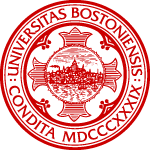|
|
|
|

RTS-CTS Mechanism in 802.11 Wireless Networks - 11/01/2002
In wireless networks, packet collisions due to hidden nodes is a primary
issue; especially in indoor environments where hidden nodes can form
easily due to the presence of obstacles. Therefore, in random medium
access schemes, a mechanism called RTS-CTS handshake is considered
to be essential for mitigating the effects of hidden nodes. RTS-CTS
mechanism attempts to prevent packet collisions by prohibiting nodes from
transmitting. Due to this, however, RTS-CTS mechanism creates interesting
interdependencies. In this talk, we will describe such interdependencies
and their effects. In particular, we will show that RTS-CTS mechanism may
unnecessarily "block" nodes from transmitting. This effect of false
blocking can in fact propagate through the entire network creating a big
chain of blocked nodes. If this "chain" is closed due to any reason, we
would observe a lock. Although such locks are not necesarily permament, it
may take long for the nodes to come out of the lock. All these effects
together affects network efficiency significantly. In particular, my
simulation results show that this may create congestion in the network,
where the throughput decreases with increasing load after a certain point.
We will also present a simple backward-compatible modification to the
RTS-CTS mechanism that increases the peak throughput of the network by 60%
in addition to removing congestion. We will conclude the talk by
discussing some of the future directions of this work.
Lab of Networking and Information Systems Room 413 Photonics Building 8 St Mary's Street, Boston MA 02215 Web site created by Sachin Agarwal (ska@bu.edu)
